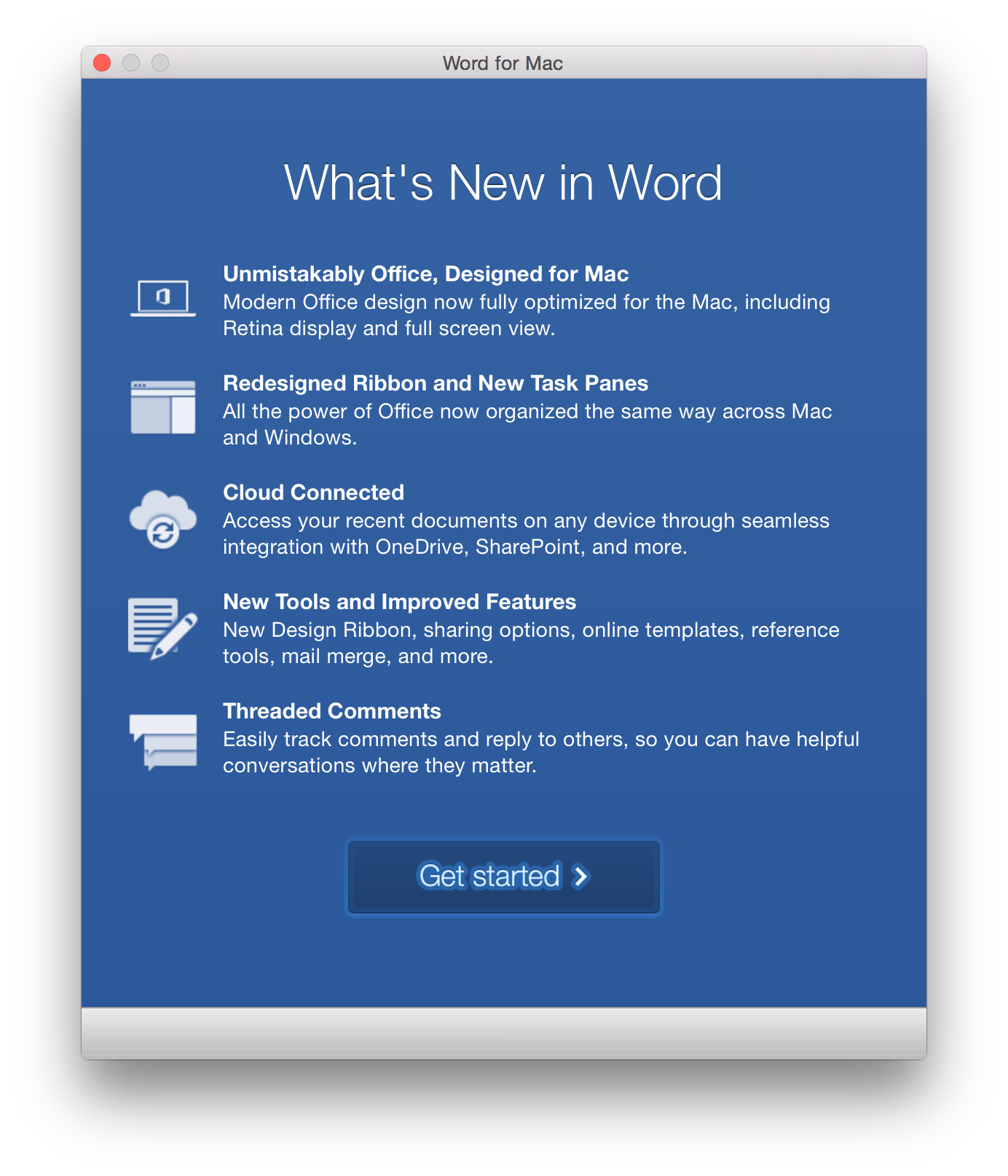Mar 31, 2017 Despite having Microsoft Release updates on how to fix Office for Mac issues, there are reports for Office crashing and freezing. The most common method to fix it is rebuilt Office 2016 for the Mac Database. How to Create a New Identity? In Mac Office 2016, Office Database Rebuild is an automatic process. Follow the steps below: Go to. Outlook 2011 had a proprietary database format and we (as users) had very few options to work with it. Outlook 2016 now uses a sqlite3 databases for its identity (just like Mail). While there is very little we can run from the app itself in terms of maintenance or troubleshooting, in theory we should be able to tap straight into the database.

- Select the Main Identity in the ‘Database Utility’ window. After selecting the database, click ‘Rebuild Database’, and then click ‘Continue’ The Rebuilding Main Identify window will display the status of the rebuild process. When the process is finished, you get the message ‘Your database was successfully rebuilt’.
- At last, you have to set the default profile, to rebuild Outlook database Mac 2016: Go to the Outlook Profile Manager & set a default profile by clicking on the profile to set as default option. Then, click on the Gear button and choose Set as default option. Top Reasons to Rebuild Mac Outlook 2011 Database.
You can rebuild the Office database by using the Microsoft Database Utility. If Office detects a problem with the database, it automatically runs the Database Utility. For a list of problems that may indicate your database is damaged, see About the Office database.
Note: The ability to manually repair or rebuild a database is not available in Outlook 2016 for Mac. If a problem such as Outlook data corruption occurs, Office 2016 for Mac automatically repairs and rebuilds the Office database for you. For more information, see About the Office 2016 for Mac database.
Before you rebuild the Office database, make sure the problem isn't the result of a damaged or fragmented hard disk. To do so, run a disk diagnostics and repair application, such as Apple Disk Utility. For more information about how to identify and repair hard disk problems, see the documentation for your disk utility application.
Caution: If you have a Microsoft Exchange account, rebuilding the database deletes any information not synchronized with the Exchange Server, including your contacts' certificates. Before you rebuild the database, you might want to back up Outlook data stored only on your local computer. For more information, see Export or manually archive Outlook items.
On the Outlook menu, click Turn Off Office Reminders.
Quit Messenger for Mac and all Microsoft Office applications, including Outlook.
Open the Microsoft Database Utility.
The default location is in /Applications/Microsoft Office 2011/Office/.
Tip: You can also open the Database Utility if you close Outlook, hold down the 'Option' key, and then click the Outlook icon in the Dock.
Click the identity of the database you want to rebuild, and then click Rebuild.
Notes:
You must have read and write permissions for the identity folder to rebuild your database. To check for permissions, select the identity in the /Users/ username/Documents/Microsoft User Data/Office 2011 Identities/ folder and then in the File menu, click Get Info. Check the permissions under Sharing and Permissions.
Before the Database Utility rebuilds a database, it creates a backup copy of your database and moves it into a folder in the /Users/ username/Documents/Microsoft User Data/Office 2011 Identities/ folder. The backup copy displays the date and time the backup was created.
If your computer has insufficient free disk space to store both your current database and its copy, an out-of-memory error occurs. For example, if the current size of the database is 10 megabytes (MB), you will need at least 20 MB of free disk space to rebuild or compact the database.
See also
Mail User Guide
You may need to rebuild a mailbox to update the list of messages it contains. For example, if messages appear to be missing or garbled, or if you can’t find all relevant messages when you search using the Entire Message search option.
In the Mail app on your Mac, select a mailbox in the sidebar.
Choose Mailbox > Rebuild.

When you rebuild mailboxes for IMAP or Exchange accounts, messages and attachments stored on your computer are discarded, and then downloaded again from the mail server to your Mac. Your mailbox appears empty until the download is complete.